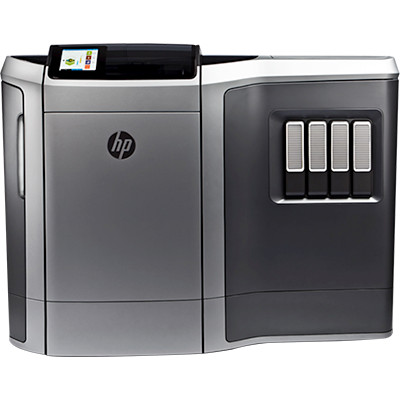HP Finally Makes First 3D Printing Move With Multi Jet Fusion

Revolutionary open-source platform should pave the way for cheaper and more effective 3D printing, HP says
HP has made its long-awaited first step into 3D printing with the unveiling of its Multi Jet Fusion technology, which it says will introduce “a new era of manufacturing”.
The new technology, part of the company’s new “Blended Reality” combined ecosystem, promises printing speeds up to ten times faster than the current standard, improved range and accuracy, and higher-strength products which should last much longer.
HP had long been expected to enter the 3D printing market given its background in printing technology, and the company says its new breakthrough will deliver higher productivity and quality at a lower cost.
 Expansive
Expansive
The new technology takes the form of an open platform built for use across different types of 3D printers, which HP says should make 3D printing into a commercially viable option – although it doesn’t expect products featuring Multi Jet Fusion to be available until 2016.
The printing process is somewhat different to the methods currently seen on the market, resembling instead the method of how modern inkjet printers produce documents. Starting with a material coating process, Multi Jet Fusion then applies a fusion agent via a print bar that scans over the material. The material is then detailed, and finally heated in order to become fused together.
HP introduced a new version of the print bar which is capable of producing over 350 drops per second at 21 microns, which, according to the company, is able to print 1,000 working gears in three hours.
“We are on the cusp of a transformative era in computing and printing,” said Dion Weisler, executive vice president of HP Printing & Personal Systems (PPS).
“Our ability to deliver Blended Reality technologies will reduce the barriers between the digital and physical worlds, enabling us to express ourselves at the speed of thought — without filters, without limitations. This ecosystem opens up new market categories that can define the future, empowering people to create, interact and inspire like never before.”
The scale of HP’s investment into the 3D printing market is set to make it one of the biggest players in what is set to be a fast-growing industry. Research released earlier this week by Gartner estimates that increasingly cheaper units will help cause shipments of 3D printers to double every year between 2015 and 2018.
Although only 108,151 3D printers were shipped during 2014, this figure is set to increase to 17,350 by next year before growing to reach 2.3 million units within four years, creating a $13.4 billion market.
Are you an expert on printers? Take our quiz!
 Expansive
Expansive